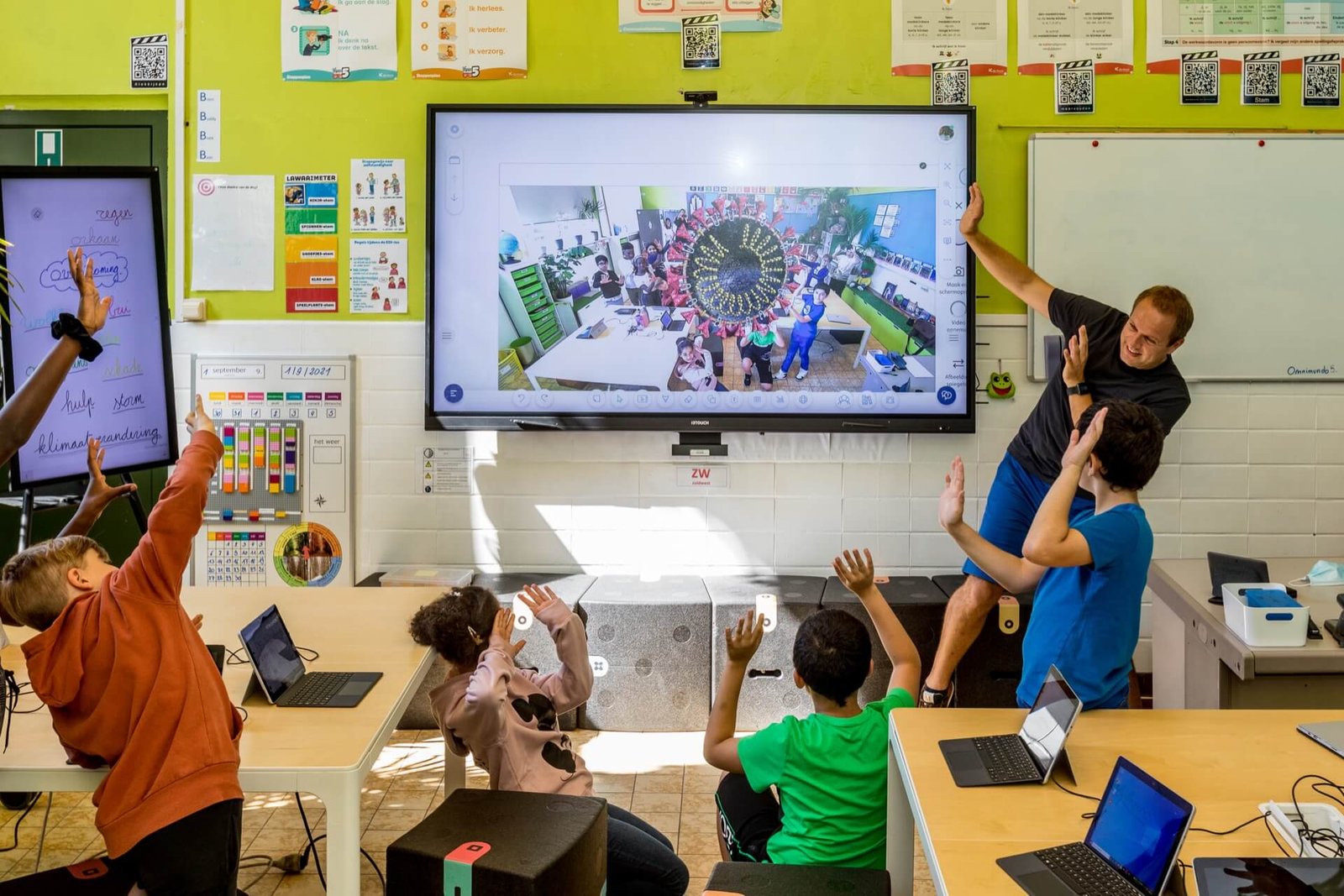
Educational funding refers to financial resources allocated for the operation and improvement of educational institutions. This funding is crucial as it ensures students have access to quality education, which is fundamental for personal and societal development. Various sources contribute to educational funding, including government entities, private donors, non-profit organizations, and international organizations. This combination creates a diverse funding landscape that supports education at all levels, from early childhood programs to higher education institutions. Educational Funding Strategies
Types of Educational Funding
There are several types of educational funding, each serving a distinct purpose. Public funding is primarily provided by governmental bodies at federal, state, and local levels, often forming the backbone of public education systems. Private funding may come from philanthropic individuals or organizations and can be directed toward specific projects, scholarships, or resources not covered by public funding. Grants and loans also play a significant role in financing education, especially for students pursuing higher education.
Stakeholders in Educational Funding
The stakeholders involved in educational funding are diverse, encompassing government officials, educational administrators, teachers, parents, and the community. Each group has a vested interest in the quality and accessibility of education. Policymakers aim to allocate funds effectively to address educational disparities. Meanwhile, educators seek resources to enhance learning outcomes. Parents and community members advocate for better funding to ensure their children receive a viable education that prepares them for future challenges.
Importance of Investing in Educational Funding
Investing in educational funding shapes the future of individuals and communities alike. With adequate financial support, educational institutions can implement innovative teaching methods, provide updated resources, and develop programs that prepare students for successful careers. By understanding the dynamics of educational funding, we can appreciate its profound impact on future generations.
The Role of Education in Society
Education serves as the foundation upon which individuals build their knowledge, skills, and values, ultimately shaping the fabric of society. It acts as a catalyst for personal and collective growth, empowering individuals to make informed decisions. This empowerment equips people with essential competencies, fostering critical thinking, creativity, and problem-solving abilities, vital in today’s rapidly changing world.
Promoting Social Cohesion
Moreover, education promotes social cohesion. Educational institutions cultivate an environment that encourages dialogue and understanding among diverse cultural, social, and economic backgrounds. This inclusivity enhances tolerance and respect while breaking down barriers that can lead to conflict. Societies prioritizing education tend to experience higher levels of social harmony and engagement, as citizens are better prepared to collaborate and address common challenges.
Economic Contributions of Education
A well-educated populace contributes significantly to a nation’s economic stability. Education enhances employability, allowing individuals to secure stable jobs and participate actively in the economy. Countries with robust educational systems often see higher rates of innovation, productivity, and overall economic growth. Investments in education ensure future generations possess the necessary skills to adapt to technological advancements and shifting labor markets. This correlation between education and economic prosperity justifies the need for sustained and increased funding in the education sector.
Impact of Underfunding on Educational Outcomes
Underfunding in education presents a substantial barrier to effective learning environments and positive student outcomes. One immediate consequence of inadequate funding is the increase in class sizes. According to the National Center for Education Statistics, larger classes diminish the amount of individual attention each student receives, leading to decreased engagement and lower academic performance. Educational Funding Strategies
Scarcity of Resources
Schools facing budget constraints often struggle to provide essential resources. A study by the Education Trust revealed that underfunded schools frequently lack updated textbooks, technology, and necessary materials. This scarcity hampers the learning process and creates an inequitable educational landscape where students in lower-income areas are deprived of the same opportunities as their more affluent counterparts.
Teacher Salaries and Retention
The impact on teacher salaries is another critical aspect of underfunding. Teachers in low-funded schools often earn significantly less than their peers in more affluent districts. Research by the Economic Policy Institute indicates that lower salaries contribute to high turnover rates among educators, disrupting educational continuity and compromising the quality of instruction. When experienced teachers leave, students suffer from a lack of consistent guidance, adversely influencing their educational journey.
Link Between Funding and Performance
Data suggests a direct link between educational funding levels and student performance on standardized assessments. A report from the Institute for Research on Education Policy & Practice found that students attending well-funded schools typically exhibit higher test scores and graduation rates compared to peers in underfunded institutions. Consequently, the ramifications of underfunding extend beyond immediate educational outcomes, impacting the future workforce and economy by inhibiting the development of a skilled labor force.
Benefits of Investing in Education
Investing in education is crucial for achieving a myriad of societal benefits that extend beyond individual success. One significant advantage is the enhancement of job prospects for students. An educated workforce increases employability and allows individuals to access higher-paying jobs, fueling economic growth. The gap in job opportunities is noticeably smaller for those with advanced education levels, resulting in a more stable economy. Educational Funding Strategies
Crime Rate Reduction
Furthermore, statistics demonstrate a correlation between education and diminished crime rates. Increased educational attainment often leads to better problem-solving skills and higher critical thinking capabilities. When people possess these skills, they are less likely to engage in criminal activities. Communities prioritizing education typically experience lower crime rates, contributing to safety and improved quality of life for residents.
Civic Participation
Another significant benefit of educational investment is the elevated civic participation observed in better-educated populations. Individuals with higher education levels are more likely to vote and engage in community activities, resulting in stronger democratic processes. This active participation fosters a sense of belonging and empowers communities to address challenges collectively.
Economic Returns
From an economic perspective, the returns on investing in education are noteworthy. An educated society exhibits increased productivity levels, contributing to GDP growth. As individuals become more skilled, the economy benefits from improved innovation and competitiveness in the global market. This interdependence between a strong educational system and economic prosperity highlights the significance of allocating resources toward educational funding.
Funding Strategies and Models
The landscape of educational funding is diverse, encompassing various strategies and models that target the financial needs of schools, colleges, and universities. One prominent approach is government funding, which forms the backbone of educational finance in many countries. This funding typically comes from federal, state, or local governments and is designed to support public education systems.
The Role of Private Donations
In addition to government funding, private donations play a vital role in enhancing educational opportunities. Philanthropic contributions from individuals, corporations, and foundations supplement government funding, creating additional pathways for schools to innovate. These private funds can support scholarships, special projects, or underfunded programs. Educational Funding Strategies
Business Partnerships
Partnerships with businesses have also emerged as a feasible funding model. Collaborations between educational institutions and corporate entities result in mutually beneficial arrangements, including sponsorships and internships. Such partnerships provide financial support and bridge the gap between academia and the workforce.
Innovative Funding Solutions
Innovative funding solutions, such as educational bonds and crowdfunding, have diversified strategies. Educational bonds allow local governments to raise capital for school improvements. Crowdfunding platforms enable communities to directly support specific educational projects through small contributions. Successful examples, like the “DonorsChoose” platform in the United States, illustrate the effectiveness of collective investment in education.
Challenges in Educational Funding
Educational funding faces various challenges that hinder securing resources necessary for quality education. One prominent challenge stems from political factors. Education funding often becomes contentious during political campaigns, with differing ideologies influencing budget allocations. Elected officials may prioritize funding for programs that resonate with their constituencies, leading to fluctuations in education budgets.
Economic Challenges
Another significant barrier is economic factors. Economic downturns can severely impact state and federal budgets, leading to cuts in educational funding. Governments facing recessionary pressures often view education as an area where expenses can be curtailed. This concern is particularly acute for schools in economically disadvantaged regions.
Regional Disparities
Moreover, disparities between regions can create significant gaps in educational funding. Wealthier areas often access enhanced local revenues through property taxes, allowing them to invest more in their schools. Conversely, schools in lower-income regions may rely heavily on insufficient state funding. This inequity results in a systemic imbalance, where students in less affluent areas have fewer resources and diminished educational opportunities.
Public Perception
Public perception of education funding also plays a role in these challenges. Many community members may not fully understand the complexities surrounding funding mechanisms and the need for sustained investment. This misunderstanding can lead to insufficient advocacy for educational resources, ultimately hindering efforts to improve funding avenues.
Successful Funding Initiatives: Case Studies
Examining various successful funding initiatives reveals innovative strategies positively impacting educational systems. One notable example is Finland, where government initiatives prioritize universal access to quality education. The Finnish model emphasizes equality, distributing resources effectively to ensure all students receive equal opportunities. A significant investment in teacher training and support has led to outstanding academic outcomes.
The “I Am a Teacher” Program
Another compelling case study is the “I Am a Teacher” program in Nigeria, which addresses the critical shortage of qualified educators in rural areas. This initiative utilizes a community-based funding model, enabling local stakeholders to invest in teacher salaries and training. By fostering a sense of ownership within communities, the program has improved educational access and quality.
“Say Yes to Education”
In the United States, the “Say Yes to Education” program partners with local governments to provide comprehensive support, including scholarships and mentoring to disadvantaged students. The program ensures funding is allocated for tuition and essential services, resulting in significantly higher graduation rates and post-secondary enrollment for participating students.
The Role of Community Involvement
Community involvement is essential for funding education, as it strengthens the relationship between educational institutions and their environment. Local communities play a pivotal role in shaping the educational landscape through fundraising, volunteer programs, and partnerships with local organizations. These collective efforts provide financial support and foster a culture of shared responsibility for the educational development of future generations.
Fundraising Activities
One primary way communities contribute is through fundraising activities. Schools often organize events like bake sales, car washes, and charity runs to raise money for specific needs. Engaging community members in these initiatives creates awareness about the importance of educational funding and encourages broader support.
Collaboration with Local Businesses
Collaboration with local businesses also enhances funding opportunities. Businesses can sponsor educational programs or donate materials and resources. This partnership creates a win-win situation, as businesses enhance their community presence while schools gain valuable support.
Advocacy and Awareness
Moreover, community advocacy plays a critical role in shaping educational funding policies. Engaging local citizens in discussions about educational needs fosters a collective voice that can influence decision-makers. By raising awareness of the importance of adequate funding, communities can advocate for policies that prioritize education.
Conclusion: The Path Forward
In conclusion, educational funding is vital for fostering quality education, ensuring equitable access, and promoting social and economic growth. The challenges surrounding educational funding are complex but not insurmountable. Through innovative funding models, community involvement, and sustained advocacy, we can pave the way for improved educational outcomes for all.
As we look ahead, prioritizing investment in education is crucial for addressing the needs of future generations. A robust educational system forms the foundation for a prosperous society, equipping individuals with the tools necessary to navigate an ever-evolving world. By acknowledging the significance of educational funding and committing to its enhancement, we can foster a brighter future for everyone.


